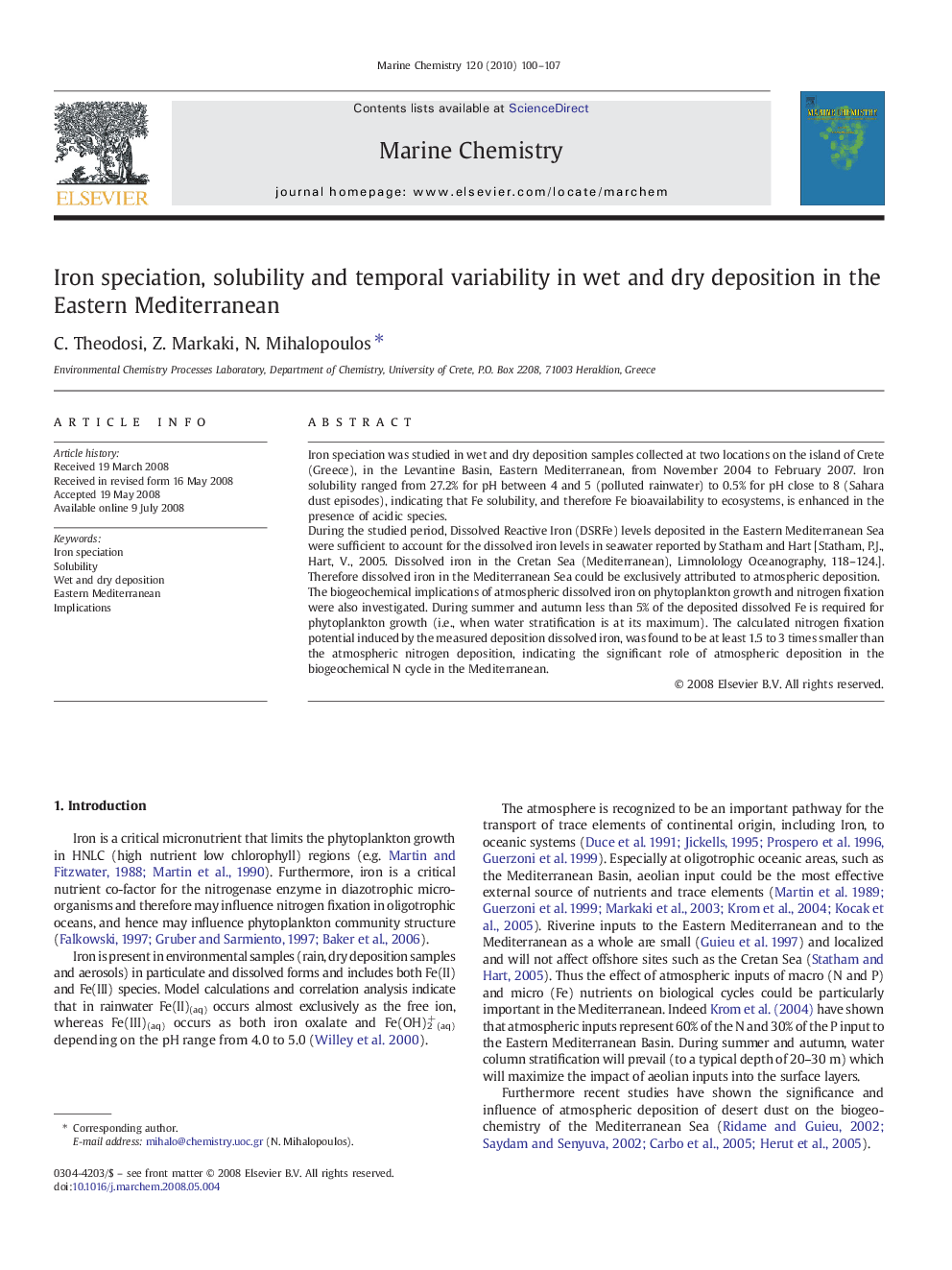| کد مقاله | کد نشریه | سال انتشار | مقاله انگلیسی | نسخه تمام متن |
|---|---|---|---|---|
| 1261659 | 1496704 | 2010 | 8 صفحه PDF | دانلود رایگان |

Iron speciation was studied in wet and dry deposition samples collected at two locations on the island of Crete (Greece), in the Levantine Basin, Eastern Mediterranean, from November 2004 to February 2007. Iron solubility ranged from 27.2% for pH between 4 and 5 (polluted rainwater) to 0.5% for pH close to 8 (Sahara dust episodes), indicating that Fe solubility, and therefore Fe bioavailability to ecosystems, is enhanced in the presence of acidic species.During the studied period, Dissolved Reactive Iron (DSRFe) levels deposited in the Eastern Mediterranean Sea were sufficient to account for the dissolved iron levels in seawater reported by Statham and Hart [Statham, P.J., Hart, V., 2005. Dissolved iron in the Cretan Sea (Mediterranean), Limnolology Oceanography, 118–124.]. Therefore dissolved iron in the Mediterranean Sea could be exclusively attributed to atmospheric deposition.The biogeochemical implications of atmospheric dissolved iron on phytoplankton growth and nitrogen fixation were also investigated. During summer and autumn less than 5% of the deposited dissolved Fe is required for phytoplankton growth (i.e., when water stratification is at its maximum). The calculated nitrogen fixation potential induced by the measured deposition dissolved iron, was found to be at least 1.5 to 3 times smaller than the atmospheric nitrogen deposition, indicating the significant role of atmospheric deposition in the biogeochemical N cycle in the Mediterranean.
Journal: Marine Chemistry - Volume 120, Issues 1–4, 20 June 2010, Pages 100–107